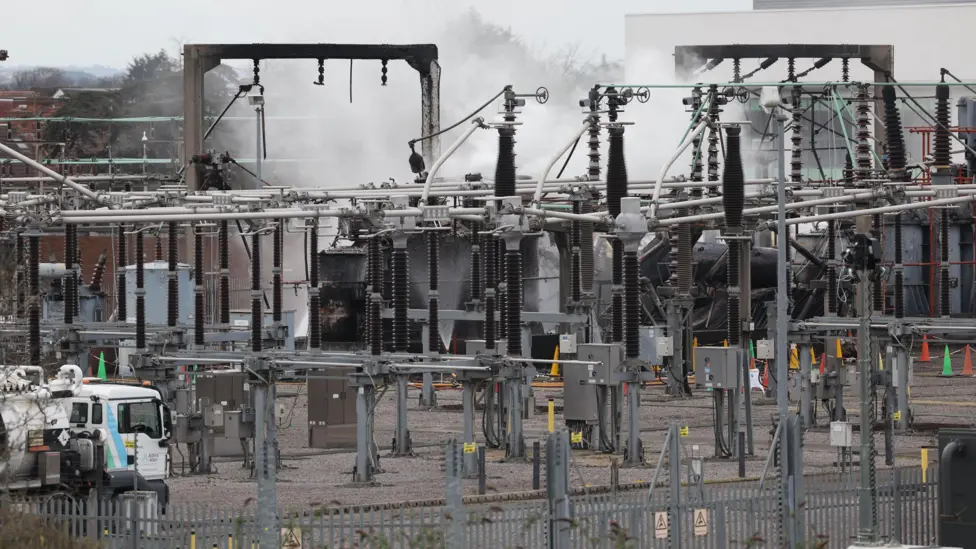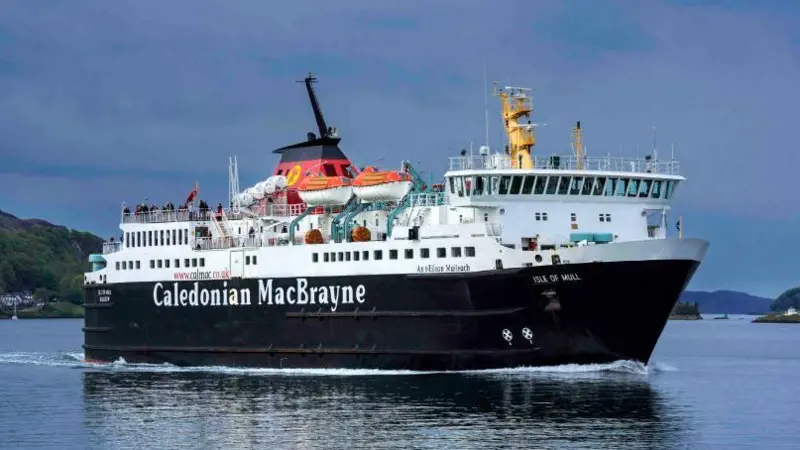Recent Public Posts - [guest]
| Re: Driving licences and tests - ongoing discussion, merged topics In "The Wider Picture in the United Kingdom" [361358/19893/51] Posted by Sixty3Closure at 22:54, 8th May 2025 |      |
Why is it, and why ever was it, possible for people and bots to buy-up driving tests slots for resale?
The bots is because the government developers can't respond quickly enough to close the exploits in the web page. As soon as they close off one another dozen scripts will appear. The block booking is also supposed to be closed off but again its probably profitable enough to develop workarounds. And unless its changed its will be a central team responsible for all the DVLA/SA rather than a gov.uk developer sat there responding to bots and exploits.
Having just recently sat my test and discussed this with my instructor I was quite surprised at how poorly paid examiners were. Apparently several of the instructors in my area were approached about becoming examiners and all laughed at the idea. Apart from a significant pay cut as mentioned in one of the articles above there was also an increase in the number of tests you had to oversee a few years ago and reduction in the time allowed for paperwork which caused a lot of resentment and stress. From memory it was an increase from 6 to 7 tests a day which if you allow each test being 45-50 mins including actually getting to the car itself and the 'chat' at the end doesn't leave long for typing it all up never mind destressing or taking a break. Its also a lot less flexible and as my instructor said if he doesn't like someone he can turn down the work.
I got chatting to my examiner on my test who commented on how nice it was to be able to have a chat with someone his own age (50+) and talked about why he was thinking of changing careers. When I mentioned I'd worked for the BBC World Service there were loads of questions and I was just trying to think of a polite way of saying 'be quiet I'm trying to drive'.
I'm not sure I could cope with sitting in the car with mainly teenagers all day and trusting their driving.
| Re: Posting news items from the press / broadcast media on the Coffee Shop forum In "News, Help and Assistance" [361357/30248/29] Posted by Red Squirrel at 22:53, 8th May 2025 |      |
Quite often news stories are based on press releases from Network Rail, local councils or other bodies who are actually quite keen to spread the word on what they are up to.
These press releases won’t have annoying ads or journalist-induced errors, so it’s worth taking the time to try and find them. Often it will be appropriate to quote them in full. Citing the source should cover any question of copyright.
| Re: Closure of Bridport branch In "Heart of Wessex" [361354/30238/19] Posted by bradshaw at 22:29, 8th May 2025 |      |
Bubble car W55033, which is preserved at the Colne Valley Railway, was the last train to leave Bridport station on May 3rd 1975.
The CVR commemorated the event this year.
https://www.colnevalleyrailway.co.uk/marking-the-closure-of-the-bridport-branch/
| Re: Wootton Bassett station - campaign for reopening In "Campaigns for new and improved services" [361353/4491/28] Posted by eightonedee at 22:26, 8th May 2025 |      |
In response to Grahame's post, can I suggest that the flow to Reading might be more significant than that to Oxford as it is by far a larger service centre with businesses and therefore employment opportunities than Oxford, so more likely to produce commuter traffic?
| Re: Posting news items from the press / broadcast media on the Coffee Shop forum In "News, Help and Assistance" [361350/30248/29] Posted by Marlburian at 21:14, 8th May 2025 Already liked by eightonedee |      |
I too have noticed that it's become more difficult to read full articles without first registering and/or accepting/rejecting cookies, and I'm inclined to assume that if I can access a particular website without too much of a problem, then others can also. But I'm careful about referring to my local online newspaper, the Reading Chonicle, as I subscribe to it to be able to read their articles in full. (I wince at the lack of journalistic skills and local knowledge - and at some of the readers' comments, with a couple of people regularly exchanging insults about their alleged sexual interests and the daily racist remark from one particular person.)
| Re: Celebrating 30 years of Wessex Wanderers Railway Walks In "Heart of Wessex" [361347/30048/19] Posted by bradshaw at 20:34, 8th May 2025 |      |
Thirty years ago Marion and I researched these walks for the partnership, who then finished off the design and printed them.
| Posting news items from the press / broadcast media on the Coffee Shop forum In "News, Help and Assistance" [361346/30248/29] Posted by Chris from Nailsea at 20:11, 8th May 2025 |      |
Readers of this forum will know that I have, for many years (and hopefully helpfully) posted various news items in the relevant boards and topics here. I have really enjoyed doing so, bringing sometimes perhaps more obscure items to your attention.

Recently, however, I have found that posting items here from the press has become increasingly 'fussy'. Many of the national newspapers now put their online full story behind a firewall, requiring subscription, and many local newspapers have added restrictions to require registration and acceptance of all cookies, for example. I do understand their reasons for doing so - they are commercial organisations, after all (unlike the Coffee Shop forum, which is free for all to view
 )
)I have therefore reined back on my posting here of such 'news and interesting items'. I will continue to post such items, but with just an explanatory heading and a hyperlink to the source item. It will then be up to any of our readers to decide whether they want to subscribe, register or accept all cookies to read the full item.
My one exception is the BBC: they remain 'open access', and I continue to stumble across (to me, anyway) interesting news items of a transport nature. The BBC continue to allow me to quote from them (I always credit my source) and link to the illustrative images in their news items. (Whether some of those illustrative images are relevant is a discussion for another place.
 )
)As ever, I hope this helps. CfN.

| Re: 2025 - Service update and amendment log, Swindon <-> Westbury In "TransWilts line" [361345/29726/18] Posted by grahame at 19:35, 8th May 2025 |      |
21:16 Westbury to Swindon due 21:58
22:31 Swindon to Westbury due 23:12
22:31 Swindon to Westbury due 23:12 will be cancelled.
This is due to a fault on this train.
22:31 Swindon to Westbury due 23:12
22:31 Swindon to Westbury due 23:12 will be cancelled.
This is due to a fault on this train.
| Re: Celebrating 30 years of Wessex Wanderers Railway Walks In "Heart of Wessex" [361344/30048/19] Posted by grahame at 19:02, 8th May 2025 |      |
I plan to rise early again tomorrow and give it another go. Somewhat prophetically, I had decided to only buy my ticket once I knew the train had passed onto the single line on tine; same again in the morning. It's a more expensive train / ticket than I like as it's not "Off Peak". A rather strange definition of "Off Peak" because both of the trains load very thinly and so in colloquial terms the are NOT peak services. Weather forecast looks OK for th walk too.
| Re: Heathrow Airport closed all day Friday 21 March 2025 In "Buses and other ways to travel" [361343/30050/5] Posted by Chris from Nailsea at 17:57, 8th May 2025 |      |
An update, from the BBC:
Heathrow shutdown cause still unknown, report says
The root cause of a fire which led to the shutdown of Heathrow Airport and affected hundreds of thousands of journeys worldwide "remains unknown", an interim report says.
Heathrow was closed to all flights for much of 21 March after a fire at a nearby electrical substation, which started the previous night, caused a power outage at the airport.
In Thursday's report, the National Energy System Operator (Neso) said a transformer disconnected and caught fire at the substation in Hayes, west London.
The grid operator's final report is due by the end of June. Heathrow Airport said it welcomed the interim findings and that it hoped the final report would provide answers on what caused the fire.
The Metropolitan Police's counter-terrorism unit carried out an initial investigation into the fire, but Neso noted that detectives found there "no evidence to suggest" the incident was suspicious.
The power outage and subsequent closure of Heathrow led to more than 270,000 journeys being affected.
Energy Secretary Ed Miliband shortly after ordered an urgent investigation into the fire to prevent it "from ever happening again", and told Neso to provide its initial findings within six weeks.
Heathrow's management has been criticised for the decision to close the airport and the long shutdown that followed. Neso said power was restored to Heathrow's terminals seven hours before flights resumed.
In a detailed timeline, it said the fire at the North Hyde substation, which was built in the 1960s, started at 23:21 GMT on 20 March and resulted in a "simultaneous loss of connection". The power outage affected 66,919 domestic and commercial customers, including Heathrow Airport, Neso said.
A major incident was declared by the Met Police at 00:42, and Heathrow took the decision to close the airport at 01:11 the following morning.
Neso's chief executive Fintan Slye said: "It is important that the right lessons are learnt from this incident to prevent future instances where possible and to manage them effectively when they do occur."

Power was restored to Heathrow's substations by 06:25 using circuits from another nearby substation, Neso said, and the flow of electricity to all four of Heathrow's passenger terminals was restarted by 10:56. But Flights did not resume until after 18:00 that day, once safety checks were completed. Planes were able to land and take off through the night to allow Heathrow to get back up to full capacity.
Neso said the re-energisation of the entire airport was only fully completed by 14:23. Other customers' power was restored by 12:24, the report said, and supply from the North Hyde substation was reinstated the following day.
Heathrow relies on three electricity substations, and has emergency back-up power supplies, such as diesel generators and batteries - but these only keep crucial safety systems running, such as landing equipment and runway lights.
Heathrow's chief executive Thomas Woldbye previously said the shutdown was caused not by a lack of power but by the time it took to switch from the damaged substation's supply to the other operational substations. Due to Heathrow's "size and operational complexity", managers decided to close the airport on safety grounds while this took place. The airport said at the time that its objective "was to reopen as soon as safely and practically possible after the fire".
Neso confirmed that the restoration of power to the airport was followed by "a period of safety checking" to ensure "safety critical systems were fully operational prior to passengers arriving at the airport".
Heathrow said in a statement: "Further clarity on how the fire started and why two transformers were subsequently impacted can help ensure greater resilience for the UK's energy grid moving forward."

Both the National Grid, which owns the North Hyde substation, and energy firm SSEN, which is responsible for power distribution in the area, said they welcomed the interim findings and would await Neso's full report.
London Fire Brigade (LFB), which sent 70 firefighters, previously said that the substation blaze "involved a transformer containing insulating oil which was fully alight". "This created a significant hazard due to being within a substation containing high-voltage equipment and the challenges of an oil-fuelled fire," it said in a statement. LFB explained crews had to wait for the transformer to cool down "before cutting through the steel casing to reach and extinguish pockets of fire that were inaccessible".
Following the publication of the interim report, Miliband said: "We now await the full report to understand what happened and learn lessons to strengthen UK energy resilience and protect our critical national infrastructure."
The root cause of a fire which led to the shutdown of Heathrow Airport and affected hundreds of thousands of journeys worldwide "remains unknown", an interim report says.
Heathrow was closed to all flights for much of 21 March after a fire at a nearby electrical substation, which started the previous night, caused a power outage at the airport.
In Thursday's report, the National Energy System Operator (Neso) said a transformer disconnected and caught fire at the substation in Hayes, west London.
The grid operator's final report is due by the end of June. Heathrow Airport said it welcomed the interim findings and that it hoped the final report would provide answers on what caused the fire.
The Metropolitan Police's counter-terrorism unit carried out an initial investigation into the fire, but Neso noted that detectives found there "no evidence to suggest" the incident was suspicious.
The power outage and subsequent closure of Heathrow led to more than 270,000 journeys being affected.
Energy Secretary Ed Miliband shortly after ordered an urgent investigation into the fire to prevent it "from ever happening again", and told Neso to provide its initial findings within six weeks.
Heathrow's management has been criticised for the decision to close the airport and the long shutdown that followed. Neso said power was restored to Heathrow's terminals seven hours before flights resumed.
In a detailed timeline, it said the fire at the North Hyde substation, which was built in the 1960s, started at 23:21 GMT on 20 March and resulted in a "simultaneous loss of connection". The power outage affected 66,919 domestic and commercial customers, including Heathrow Airport, Neso said.
A major incident was declared by the Met Police at 00:42, and Heathrow took the decision to close the airport at 01:11 the following morning.
Neso's chief executive Fintan Slye said: "It is important that the right lessons are learnt from this incident to prevent future instances where possible and to manage them effectively when they do occur."

Power was restored to Heathrow's substations by 06:25 using circuits from another nearby substation, Neso said, and the flow of electricity to all four of Heathrow's passenger terminals was restarted by 10:56. But Flights did not resume until after 18:00 that day, once safety checks were completed. Planes were able to land and take off through the night to allow Heathrow to get back up to full capacity.
Neso said the re-energisation of the entire airport was only fully completed by 14:23. Other customers' power was restored by 12:24, the report said, and supply from the North Hyde substation was reinstated the following day.
Heathrow relies on three electricity substations, and has emergency back-up power supplies, such as diesel generators and batteries - but these only keep crucial safety systems running, such as landing equipment and runway lights.
Heathrow's chief executive Thomas Woldbye previously said the shutdown was caused not by a lack of power but by the time it took to switch from the damaged substation's supply to the other operational substations. Due to Heathrow's "size and operational complexity", managers decided to close the airport on safety grounds while this took place. The airport said at the time that its objective "was to reopen as soon as safely and practically possible after the fire".
Neso confirmed that the restoration of power to the airport was followed by "a period of safety checking" to ensure "safety critical systems were fully operational prior to passengers arriving at the airport".
Heathrow said in a statement: "Further clarity on how the fire started and why two transformers were subsequently impacted can help ensure greater resilience for the UK's energy grid moving forward."

Both the National Grid, which owns the North Hyde substation, and energy firm SSEN, which is responsible for power distribution in the area, said they welcomed the interim findings and would await Neso's full report.
London Fire Brigade (LFB), which sent 70 firefighters, previously said that the substation blaze "involved a transformer containing insulating oil which was fully alight". "This created a significant hazard due to being within a substation containing high-voltage equipment and the challenges of an oil-fuelled fire," it said in a statement. LFB explained crews had to wait for the transformer to cool down "before cutting through the steel casing to reach and extinguish pockets of fire that were inaccessible".
Following the publication of the interim report, Miliband said: "We now await the full report to understand what happened and learn lessons to strengthen UK energy resilience and protect our critical national infrastructure."
Interesting link, thanks for posting. I note the references to the "new Ludgershall Branch Loop Siding" - I had wondered about the branch's double track disappearing under the bridge to the west, which seemed a bit elaborate for just MoD use.
I can't imagine there would be much demand for the site?
| Re: Celebrating 30 years of Wessex Wanderers Railway Walks In "Heart of Wessex" [361341/30048/19] Posted by grahame at 17:48, 8th May 2025 Already liked by Chris from Nailsea |      |
That aborts my day out then ... 07:45 walk start from Chetnole is out ... GWR booking engine now suggests 11:45 which is about the time I would be completing my 8 hour walk!
8 miles, not 8 hours, surely?

Yes - I should have said 8 half-hour walk to the pub in Maiden Newton ready perhaps for the 1 p.m. train home.
| Re: Celebrating 30 years of Wessex Wanderers Railway Walks In "Heart of Wessex" [361340/30048/19] Posted by Chris from Nailsea at 17:29, 8th May 2025 |      |
That aborts my day out then ... 07:45 walk start from Chetnole is out ... GWR booking engine now suggests 11:45 which is about the time I would be completing my 8 hour walk!
8 miles, not 8 hours, surely?

| Re: 2025 - Service update and amendment log, Swindon <-> Westbury In "TransWilts line" [361339/29726/18] Posted by bobm at 15:47, 8th May 2025 |      |
12:17 left Westbury on time but was stopped outside Trowbridge for 20 minutes as the preceding train to Cardiff had come to a stand due to a fault with the driver vigilance device. It got on the move after systems were isolated and terminated at Bath Spa.
The Swindon service didn't make up any lost time and arrived in Swindon 20 minutes late before leaving 12 down on the return journey.
| Re: Caledonian MacBrayne ferries in Scotland In "Buses and other ways to travel" [361338/30034/5] Posted by Chris from Nailsea at 15:15, 8th May 2025 |      |
An update, from the BBC:
CalMac directly awarded new ferry service contract

The contract to run Scotland's west coast ferry services in future has been directly awarded to the existing publicly-owned operator CalMac Ferries Ltd.
The Scottish government said the service would now be focused on a "public service model" instead of being run on a commercial basis.
The latest contract for the Clyde and Hebridean Ferry Service (CHFS) had been due to expire last September but was extended by a year.
Ministers had indicated that a direct award, without a competitive tender, was their preference, but they needed more time to ensure this could be done without a legal challenge.
No details of the contract's value or duration were given, but the previous eight-year contract for the heavily-subsidised ferry service was worth £975m. One estimate has suggested a subsidy of £3.7bn over 10 years would now be required.
CalMac is the UK's biggest ferry operator and has held the most recent contract to run the routes since 2016, serving 50 destinations.
But the firm has struggled in recent years to maintain services with an ageing and increasingly unreliable fleet which it leases from another government-owned firm. Since 2007, the ships and some of the harbours it relies on have been owned by Caledonian Maritime Assets Ltd or CMAL, in a division designed to comply with EU competition rules.
Delays in replacing the older vessels, in part due to the problems with two new dual-fuel ferries ordered a decade ago, have stretched the service almost to breaking point, with many vessels beyond their expected service life.
Transport Secretary Fiona Hyslop said the direct award to CalMac signalled a new public service model rather than treating it as a commercial contract. She said this would lead to change that better served the needs of island communities, and she denied it would be seen as a reward for failure.
She told BBC Scotland News: "There are over 170,000 sailings. There have been cancellations, some for technical reasons, some for weather reasons, but the vast majority of CalMac's sailing are delivered very well in indeed. If you talk to islands the support for the frontline services of CalMac staff is very appreciative."
CalMac chief executive Duncan Mackison welcomed the emphasis on treating the Clyde and Hebridean routes as a public service and promised improvements. He said: "During the extension period for the current contract, we recognised the need for change and are already driving change through the expansion of local teams, enhanced community engagement and improved responsiveness to local requirements.".
The Clyde and Hebridean Ferry Service contract is offered as a single "bundle" which the government says has the advantages of protecting less profitable lifeline routes and delivering economies of scale. Critics of that choice have argued that unbundling certain routes and allowing competitive tender would encourage efficiencies.
The Northlink routes to Orkney and Shetland are currently operated by privately-owned Serco, with the government setting fares and service levels and paying the firm a subsidy to make up the difference between costs and revenue.
Hyslop said it was the government's intention to continue putting the Northern Isles services out to competitive tender.
Trade unions have backed the direct award of the west coast routes to the existing publicly-owned operator, with the RMT union calling for a "People's CalMac". The unions have, however, been critical of the government's approach to ferry procurement which has left CalMac with ageing vessels prone to breakdown.
The GMB union also contrasted the direct award to CalMac with the recent £160m small ferries contract that went to tender and was won by a Polish firm rather than the nationalised Ferguson shipyard in Port Glasgow.
GMB Scotland general secretary Louise Gilmour said the government should now merge CalMac and CMAL to encourage a more joined-up approach focused on supporting both ferry services and Scottish industry. "Our islands' need for reliable and modern ferries can drive a healthy and secure shipbuilding and maritime sector," she said. "It seems an obvious ambition with significant economic benefits and one that should not be beyond Scotland's capabilities to deliver."
The Scottish Conservatives said the direct award provided continuity but that CalMac would continue to struggle unless the government provided it with a resilient fleet. The party's transport spokeswoman Sue Webber said: "Islanders have been betrayed by the SNP time and time again, and any ferry provider is only as good as the fleet it has to work with."
(Article continues)

The contract to run Scotland's west coast ferry services in future has been directly awarded to the existing publicly-owned operator CalMac Ferries Ltd.
The Scottish government said the service would now be focused on a "public service model" instead of being run on a commercial basis.
The latest contract for the Clyde and Hebridean Ferry Service (CHFS) had been due to expire last September but was extended by a year.
Ministers had indicated that a direct award, without a competitive tender, was their preference, but they needed more time to ensure this could be done without a legal challenge.
No details of the contract's value or duration were given, but the previous eight-year contract for the heavily-subsidised ferry service was worth £975m. One estimate has suggested a subsidy of £3.7bn over 10 years would now be required.
CalMac is the UK's biggest ferry operator and has held the most recent contract to run the routes since 2016, serving 50 destinations.
But the firm has struggled in recent years to maintain services with an ageing and increasingly unreliable fleet which it leases from another government-owned firm. Since 2007, the ships and some of the harbours it relies on have been owned by Caledonian Maritime Assets Ltd or CMAL, in a division designed to comply with EU competition rules.
Delays in replacing the older vessels, in part due to the problems with two new dual-fuel ferries ordered a decade ago, have stretched the service almost to breaking point, with many vessels beyond their expected service life.
Transport Secretary Fiona Hyslop said the direct award to CalMac signalled a new public service model rather than treating it as a commercial contract. She said this would lead to change that better served the needs of island communities, and she denied it would be seen as a reward for failure.
She told BBC Scotland News: "There are over 170,000 sailings. There have been cancellations, some for technical reasons, some for weather reasons, but the vast majority of CalMac's sailing are delivered very well in indeed. If you talk to islands the support for the frontline services of CalMac staff is very appreciative."
CalMac chief executive Duncan Mackison welcomed the emphasis on treating the Clyde and Hebridean routes as a public service and promised improvements. He said: "During the extension period for the current contract, we recognised the need for change and are already driving change through the expansion of local teams, enhanced community engagement and improved responsiveness to local requirements.".
The Clyde and Hebridean Ferry Service contract is offered as a single "bundle" which the government says has the advantages of protecting less profitable lifeline routes and delivering economies of scale. Critics of that choice have argued that unbundling certain routes and allowing competitive tender would encourage efficiencies.
The Northlink routes to Orkney and Shetland are currently operated by privately-owned Serco, with the government setting fares and service levels and paying the firm a subsidy to make up the difference between costs and revenue.
Hyslop said it was the government's intention to continue putting the Northern Isles services out to competitive tender.
Trade unions have backed the direct award of the west coast routes to the existing publicly-owned operator, with the RMT union calling for a "People's CalMac". The unions have, however, been critical of the government's approach to ferry procurement which has left CalMac with ageing vessels prone to breakdown.
The GMB union also contrasted the direct award to CalMac with the recent £160m small ferries contract that went to tender and was won by a Polish firm rather than the nationalised Ferguson shipyard in Port Glasgow.
GMB Scotland general secretary Louise Gilmour said the government should now merge CalMac and CMAL to encourage a more joined-up approach focused on supporting both ferry services and Scottish industry. "Our islands' need for reliable and modern ferries can drive a healthy and secure shipbuilding and maritime sector," she said. "It seems an obvious ambition with significant economic benefits and one that should not be beyond Scotland's capabilities to deliver."
The Scottish Conservatives said the direct award provided continuity but that CalMac would continue to struggle unless the government provided it with a resilient fleet. The party's transport spokeswoman Sue Webber said: "Islanders have been betrayed by the SNP time and time again, and any ferry provider is only as good as the fleet it has to work with."
(Article continues)
| Re: 2025 - Service update and amendment log, Swindon <-> Westbury In "TransWilts line" [361337/29726/18] Posted by grahame at 13:16, 8th May 2025 |      |
12:17 Westbury to Swindon due 12:59
12:17 Westbury to Swindon due 12:59 is being delayed between Westbury and Trowbridge and is now expected to be 21 minutes late.
This is due to a fault on a train in front of this one.
12:17 Westbury to Swindon due 12:59 is being delayed between Westbury and Trowbridge and is now expected to be 21 minutes late.
This is due to a fault on a train in front of this one.
13:14 Swindon to Westbury due 13:57
13:14 Swindon to Westbury due 13:57 will be starting late from Swindon.
This is due to a fault on a train in front of this one.
13:14 Swindon to Westbury due 13:57 will be starting late from Swindon.
This is due to a fault on a train in front of this one.
| Re: Wootton Bassett station - campaign for reopening In "Campaigns for new and improved services" [361336/4491/28] Posted by Noggin at 13:03, 8th May 2025 |      |
Given the experience elsewhere in the UK, I think it's fairly safe to say that "build it and they will come" applies here and that we'd see almost immediate changes in transport usage patterns as people would take advantage of the new facilities.
I'm going to be very crayonista, but given battery-electric trains (and future electrification), would a half-hourly "all stops" Swindon to Salisbury service not make sense? Wootton Bassett station would of course be horribly complicated and expensive, I suspect that Chippenham would need 4 platform faces to enable trains to pass, Westbury probably needs the missing platform face to be reinstated and in this magical world, an Abbey Wood-style Swindon East Parkway with two terminating platforms would generate significant traffic and free up capacity in Swindon station.
If we followed this logic, then a compliment would be an Oxfordshire-championed Swindon to Kidlington (or Witney if we were really enthusiastic) via Oxford service which would support a "Wantage Parkway".
I would have thought that the Bristol to Chippenham corridor would be best served by a MetroWest RER-style service, reopening St Annes, Saltford, Batheaston, Corsham etc.
I'm not convinced about Hullavington, but it would likely make sense to add an additional pair of tracks between Bristol Parkway and Chipping Sodbury, terminating a Bristol RER there in a "Yate South" station - there being a huge amount of land south of the line which could be used for housing.
It's a lot of money, but it would be transformational for the region and given much of the nonsense our cash is spent on, would it really be that much?
| Re: Bath Spa station - dealing with future capacity issues - ideas? In "Bristol (WECA) Commuters" [361335/30230/21] Posted by grahame at 12:08, 8th May 2025 |      |
Standing a couple of times recently at Bath Spa station, I am struck by the uneven distribution of people waiting on the platform
Partly due to the section of the London end in your picture corresponding to the 1st class carriages perhaps?
Oh - I am sure so ...
1. First Class area
2. Local trains not long enough to stop there
3. Unsheltered
4. A long way from the entrance
5. Nowhere to sit while you wait
Could almost have been designed to clump people in the middle of the platform.
This might help
https://property.networkrail.co.uk/properties/ADV00501/
| Re: Bath Spa station - dealing with future capacity issues - ideas? In "Bristol (WECA) Commuters" [361333/30230/21] Posted by matth1j at 11:46, 8th May 2025 |      |
Standing a couple of times recently at Bath Spa station, I am struck by the uneven distribution of people waiting on the platform
Partly due to the section of the London end in your picture corresponding to the 1st class carriages perhaps?
Yesterday I visited Andover (parking my car several miles away and walking in) and popped into Andover Station. To my slight surprise the three sidings for, presumably military traffic,looked freshly ballasted, though with wooden sleepers. See this photo of two years ago.
I thought that the last time I'd been at the station was in mid-January 1963 when snowfall deterred my father from driving me from Sidmouth to Marlborough, so I took the train from Honiton and spent more than an hour in the waiting room for a connection to Marlborough. But I see that the line and station had been closed by then, so I guess it must have been in 1961, which also had a bad January weather-wise.
After closure Marlborough College specials did run to and from Paddington for a couple of years at the beginnings and ends of terms. Account here.
| Re: Bath Spa station - dealing with future capacity issues - ideas? In "Bristol (WECA) Commuters" [361330/30230/21] Posted by grahame at 10:14, 8th May 2025 Already liked by Witham Bobby |      |
Standing a couple of times recently at Bath Spa station, I am struck by the uneven distribution of people waiting on the platform and the narrow waistline of the stair cases and lifts. They lead to longer station dwell times than neded due to clumping - espcially to join London trains - and congestion at the top of the stairs / queues for lifts to get off the platform. Here are two pictures taken a minute apart last Saturday - and the train approaching in the second picture fills the full length of that platform.


At that quieter London end - of the westbound platform - there is already a slope with a wide access gate. In many ways it seems to be well kept secret; certainly not obvious. On the eastbound side though there is no obvious easy way to get extra access with the station towering above an embankment and buildings, and the remains of a bay platform.
The Bristol end of the platforms is very interesting. One has been extended over the river (to 10 carriages) but the other has not. Once over the river, there are half a dozen arches blocked off and onto waste ground - room for an extrance /exit building with escalators and a staircase on both sides? And with entrances to that building that lead straight to the wide footbridge already there over the river into the "far" end of the bus station. For local traffic / "commuter" flows would this not relieve pressure on the historic bottleneck? There would be a need for shelter on the more exposed platform ends to merge in current and new accessss, something that has been done (IMHO) very poorly at places like Newport.

| Re: Bath Spa station - dealing with future capacity issues - ideas? In "Bristol (WECA) Commuters" [361329/30230/21] Posted by Sulis John at 08:43, 8th May 2025 |      |
In the 1950s did BR really propose replacing Bath Spa with a new station on the site of Westmoreland Road goods station? Also, closing the Midland line between Green Park and the outskirts of the city along with the S&D from Midford, replaced with a spur from the GWR line to the Midland west of the city, and a junction close to the Bath Spa station site serving a new-build double track line from there beneath Claverton Down to Monkton Combe, rejoining the S&D south of Midford?
Think it was a joint proposal by the LMS / GWR in their dying days.









